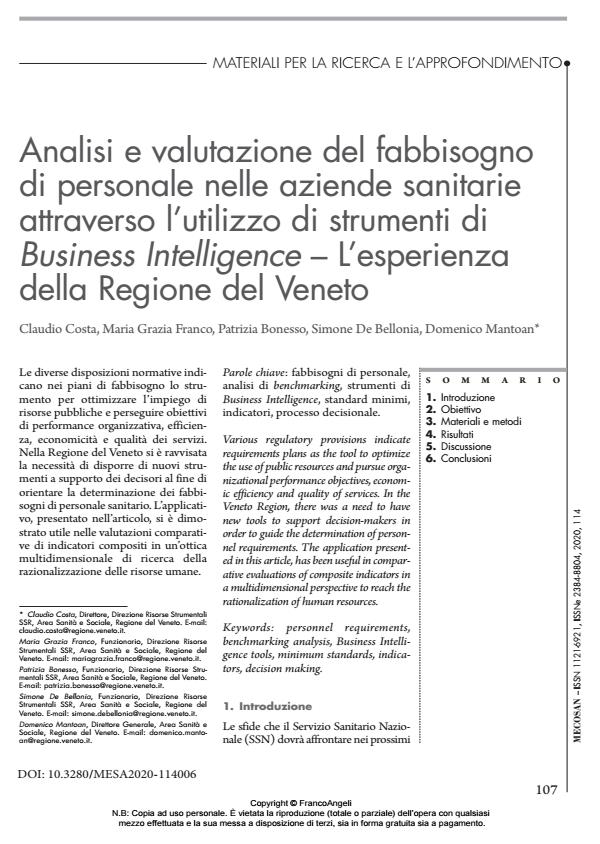Analisi e valutazione del fabbisogno di personale nelle aziende sanitarie attraverso l’utilizzo di strumenti di Business Intelligence - L’esperienza della Regione del Veneto
Journal title MECOSAN
Author/s Claudio Costa, Maria Grazia Franco, Patrizia Bonesso, Simone De Bellonia, Domenico Mantoan
Publishing Year 2020 Issue 2020/114
Language Italian Pages 27 P. 107-133 File size 977 KB
DOI 10.3280/MESA2020-114006
DOI is like a bar code for intellectual property: to have more infomation
click here
Below, you can see the article first page
If you want to buy this article in PDF format, you can do it, following the instructions to buy download credits

FrancoAngeli is member of Publishers International Linking Association, Inc (PILA), a not-for-profit association which run the CrossRef service enabling links to and from online scholarly content.
Claudio Costa, Maria Grazia Franco, Patrizia Bonesso, Simone De Bellonia, Domenico Mantoan, Analisi e valutazione del fabbisogno di personale nelle aziende sanitarie attraverso l’utilizzo di strumenti di Business Intelligence - L’esperienza della Regione del Veneto in "MECOSAN" 114/2020, pp 107-133, DOI: 10.3280/MESA2020-114006